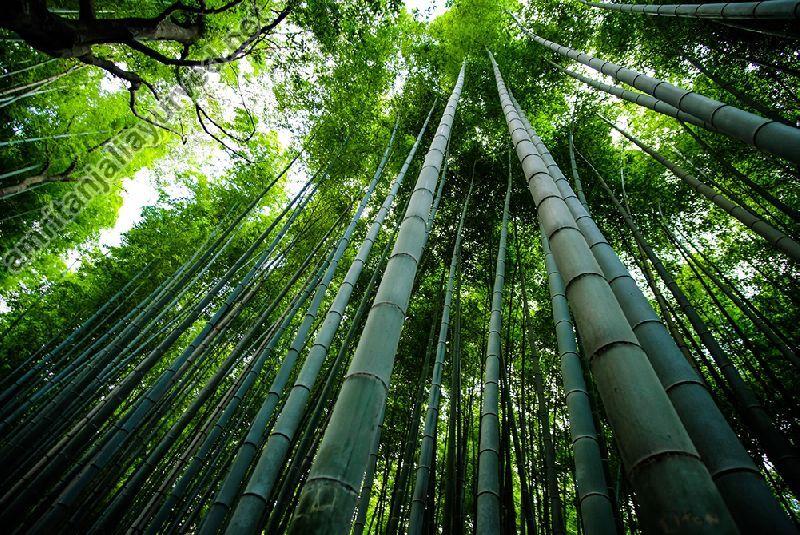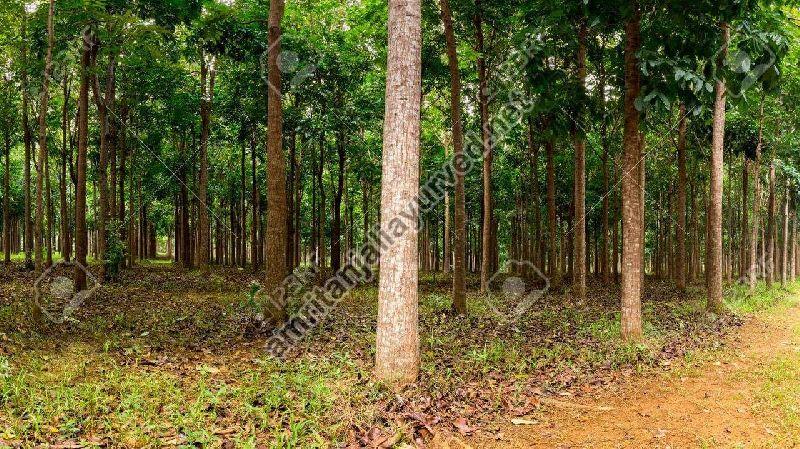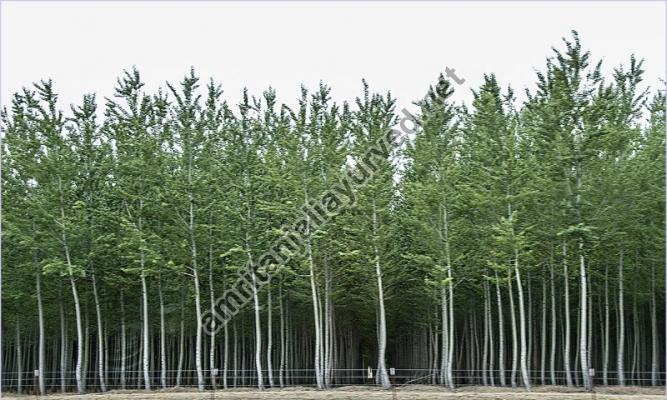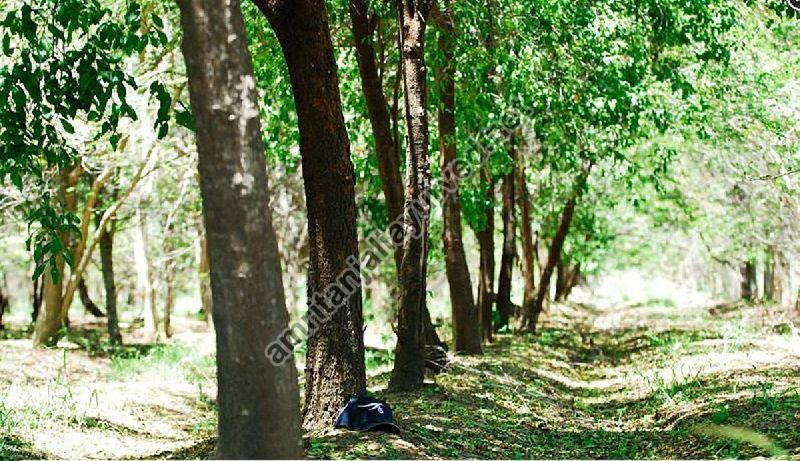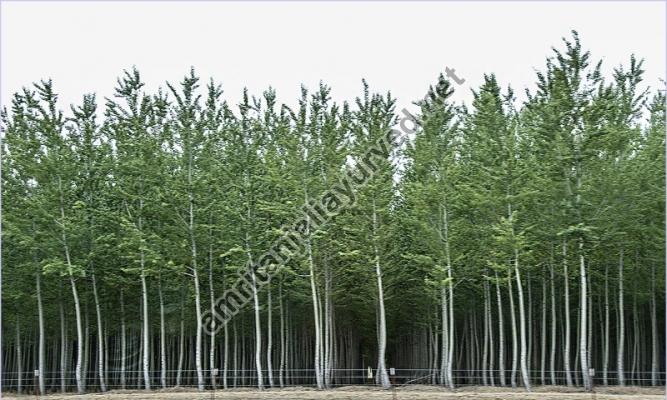Saheli Nagar, Udaipur, Rajasthan
- GST NO. : 08AAOCA7653C1ZJ
Forestry
Leading Manufacturers, Exporters, Wholesaler, Retailer and Trader of Bamboo Plant, Mahogany Plant, Malabar Neem Plant, Sandalwood Plant and Poplar Plant from Udaipur.
| Business Type | Manufacturer, Exporter, Supplier, Retailer, Wholesaler |
| Country of Origin | India |
| Usage | Plantation |
| Other Name | Bambusa Tulda |
| Height when Fully Grown | 10-14 Feet |
| Soil Type | Alkaline, Clay |
| Other Necessities | Fast Growth, Well Watered |
Preferred Buyer From
| Location | Worldwide |
Bamboo is one of the commercially cultivated crops in India and it is also considered as ‘a poor man’s timber’. India is the second largest producer of Bamboo in the world after China. The yearly bamboo production in the country is estimated at around 3.23 million tons. In Asia, bamboo is the most integrated part of the culture and is used as a substitute to woods. Although there are around 136 species of bamboo that exist in the country, still only some of them are commercially feasible.
| Business Type | Manufacturer, Exporter, Supplier, Retailer, Wholesaler |
| Type | Mahogany Plants |
| Application | Multi-purpose Costly Furniture, Farming |
| Color | Reddish Brown |
| Condition | Fresh |
| Soil Specific | Well Drained |
| Necessities | Full Sun Exposure |
Preferred Buyer From
| Location | Worldwide |
Mahogany is a kind of ood — the straight - grained, reddish - brown timber . The three species are- Swietenia macrophylla, Swietenia mahagoni and Swietenia humilis. Swietenia species are classified officially as "genuine mahogany".Mahogany is a commercially important lumber prized for its beauty, durability, and color, and used for paneling and to make furniture, boats, musical instruments and other items.
The mahogany tree ''sweitenia'' which grow as natural populations in tropical America, Asia,and Africa is a high value timber tree known for its redwood color ,strength,durability,water resistance and aesthetic appeal.the mahogany tree can grows over 60 feet high and reaching around 4-5 feet diameter.
The continual increasing demand for hardwood timber , Mahogany can offer a tax effective investment in forestry make mahogany most demanding timber plant in this region. Mahogany is the most prized timber tree of India. It can be grown in almost every part of the country except the dry western zone, although the best Mahogany Plant develops in well drained deep alluvial soil.
Land Preparation
Prior to planting Mahogany must be ensured that the selected site is well thoroughly cleared of weeds.
Dig pit of size 1.5x1.5x1.5ft. During digging of the pit, care should be thoroughly cleaned of weeds.
The pit mixture should compose of well - decomposed organic manure (FYM or compost), de oiled neem cake and Top soil (kept aside during digging of the pit.) The pit mixture is prepared by thoroughly mixing equal parts of organic manure and topsoil, along with 200 grams of de-oiled neem-cake. The pit-mixture thus prepared, should be used for filling the pit.
Pit Filling & Spacing
The pits must be filled, as much as possible, only with the prepared pit-mixture. If the topsoil is insufficient, coarse river sand may be used as an inert substitute, which also increases porosity and aeration. A peg may be placed in the centre of the pit for identification during planting. The pits must be filled at least 2weeks before planting, to allow for the pit-mixture to settle. The recommended spacing for the plant is a square or triangular grid type with dimension of 6.0 X 6.5 ft.
Irrigation
Watering has to be done immediately after planting. During the first two week watering should be done alternate day. Subsequently, irrigation can be done once in 3 to 4 days depending upon the soil and weather conditions. In non-irrigated lands micro-irrigation systems are recommended.
Fertilizer Application & Doses
Fertilizer should be applied in 8 split doses.
First year N: P: K (17:17:17) & Micro Nutrients 200gms. / Plant / month, except dormancy (Dec - Jan) period. Every month this has to be split and applied through pocket manuring. Make hole 1 ft. away from the plants and the depth of the pit should be 1 ft. Apply the fertilizer in the hole and fill it with the soil.
Month No. of Holes GMS/ Holes No. of Application / Month Quantity 1st 4 10 3 120gms 2nd 4 15 3 180gms 3rd 4 15 3 180gms 4th 4 25 2 200gms 5th 4 25 2 200gms After 5th the same type of pocket manuring can be continued upto three years.
Micro nutrient application 1 gm / lt. Of water, foliar application once in 15 days for 1 year.
Maintenance
The site must be cleaned of weeds and the soil around the plant should be kept loose and well aerated.
Mahogany can grow on a variety of soils. The quality of its growth, however, depends on the depth, structure, porosity, drainage and moisture-holding capacity of the soil. It develops best on deep, well-drained and fertile soils. Mahogany prefers moist, warm tropical climate. It can withstand extremes of temperature, but maximum & minimum shade temperatures of 25- 44. 0 c is the most favorable for its growth. It grows well in rainfall zone of 1200-2500 mm. It prefers a deep, fertile. The sandy soil is considered to be the best soil texture for this tree. It fails to grow in the soil with pH below 6.5.The calcium content of the soil is also an important factor; calcium deficiency in the soil results in stunted growth of Mahogany Planting.
Harvesting, yield & Returns
The highest growth is recorded under plantation condition in BIHAR and tarai belt of NEPAL. At 10 years of age the height growth was 23.1m and diameter was 28.7 cm. From the general yield table in the first quality Mahogany at 10 years of age, the average diameter is 27.2 cm and average height is 23.2m. The number of trees per acre is 1200-1500. The total yield of stem timber is about 36000 Cft timbers on good sites. At the best we may expect a tree to produce a maximum of 20 Cft of timber in 10 years under best conditions of intensive management and there could be a maximum of 1500 trees per acre.
Technical Support
We also provide technical support for farming.
We provide Agro technology and Agribusiness consultancy through better utilization of your resources, value of your money, independent consultancy, cost effective, profitable solutions and complete satisfaction without any deviation.
Material Available
- plant
- SEED
With a proper network of buyers with us, we are able to provide returns of the farmers/cultivators who purchase the planting material from us and do farming as per our instructions. The crop/crops under buy back agreement are provided with targeted requirements. We are making farming a business which gives assured profits.
Persons interested in farming with buy back agreement will be entertained only on prior appointment basis.+91-9799931200
| Business Type | Manufacturer, Exporter, Supplier, Retailer, Wholesaler |
| Density: | 10 x 12 Feet |
| Soil Specific: | Alkaline |
| Season of planting: | Can be plant in any season |
| Scientific Name: | Melia dubia |
| Life Span: | 30 to 35 years if not harvested |
| Height: | 60 to 70 feet |
Preferred Buyer From
| Location | Worldwide |
We are staffed with professionals and under their guidance; we keep a close check on the products and ensure that the range is as per the exact customers' requirements. All those who are looking for a responsible name supplying Malabar Neem Plants(Melia Dubia) can get in touch with us!
Details :
- Synonym : Melia composita willd.
- Family : Miliaceae.
- Kannad : Hebbevu
- Telgu : Munnattikaraka
- Tamil : Maali vembu TRADE: Malbar Nim wood
More About Malabar Neem Plants :
- A large tree, attaining a height of 20 m. with a spreading crown and a cylindrical straight bole of 9 m. length X 1.2-1.5 m. girth found in Sikkim Himalayas, North Bengal. Upper Assam, Khasi Hills, hills of Orissa, N.Circas, Descant and Western Ghats at altitudes of 1500 – 1800 m.
- It grows rapidly and is used for reforestation purposes. (Troup, I 186: Burkill, II 1443: Bor, 253) and yields a useful timber.
Site Factors : In its natural habitat the absolute maximum shade temperature varies from 37.5–47.5 C and the absolute minimum from 0–15 C. It does well in moist regions, with a mean annual rainfall exceeding 1000 mm. The mean relative humidity in July varies from70–90% and in January from 50–80 %.
Topography : It is commonly found in the hills at elevations ranging from 600 – 1800m.
Cultivation :
- The rooted saplings are planted onset of the monsoon or during the monsoon.
- The suggested pit size is 2’ x 2’- 0.60m Cube.
- Espacement of 3.5 m x 3.5 m is recommended. This will give better girth in shorter duration.
Growth Statistics : The growth is rapid. GAMBLES’s specimens gave 8 – 12 rings/dm of radius (mean annual girth increment 5.3 – 8 cm) for a Tamil Nadu specimen, and 28 rings/dm (mean annual girth increment 2.3 cm) for a specimen from Bengal. North Kanara in Karnataka specimen showed 12-16 rings/dm of radius (Talbot, 1909) giving a mean annual girth increment of 4 –5.3 cm. Trees grown in the Calcutta Botanical gardens from specimen from Malbar origin are said to have reached in 7 years an average height of 14m and a girth of 112 cm at breast height. This rate of growth is equivalent to 4-rings/ dm of radius. Even in comparatively dry regions with a rainfall of 750 – 1000 mm, a height of 3 – 4.5 m is obtained in plantations, against 6-7.5 m in more favourable locations.
Utilisation :
- Physical and Mechanical Properties of the Wood : The sapwood is grayish-white, usually with a yellowish cast; the ‘ heartwood ’ is light pink to light red when first exposed, ageing to pale russet brown, subject to grey stain. It is lustrous and without characteristic odour or taste.
- It is very light (sp.gr. approximately 0.34, weight at 12 5 moisture content about 336 kg/m3), straight-grained, coarse and somewhat uneven-textured. Annual growth rings are distinct but not conspicuous and number 12-16 / dm of radius.
- Seasoning and Preservation behavior : The timber seasons well if the logs are converted in a green state, though if left long in the log, it is liable to develop end splitting and decoration. Like many other meliaceous timbers, it contracts very considerably across the grain while drying out. The best method of dealing with the timber is to convert the logs as soon after felling as possible and to open stack the sawn material, preferably undercover to avoid grey stain.
- Present day uses : The wood is used for packing cases, cigar boxes, ceiling planks, building purposes, agricultural implements, pencils, math boxes, splints and catamarans. In Srilanka, it is employed for outriggers of boats. It is suitable for musical instruments, tea boxes and the most importantly in making plywood, as the wood is anti-termite by itself.
The details of quality & technical specifications are as follows :
- The logs had very high moisture contents and were green.
- All logs were round and good for peeling. Roundness seems to be inherent quality of this tree.
- Logs peel easily.
- Outturn is excellent – 70% & better in fresh cut logs.
- Veneer strong and firm.
- Two small logs were peeled for faces. Quality obtained was acceptable.
- M.R.Grade Plywood pressed with these veneers and in combination with other veneers gave excellent results.
- (Pearson & Brown, I 243; Macmillan, 96, 213; Cameran, 64; Trotter, 1944, 217; Rama Rao, 73; Indian For., 1948, 74, 279)
With a proper network of buyers with us, we are able to provide returns of the farmers/cultivators who purchase the planting material from us and do farming as per our instructions. The crop/crops under buy back agreement are provided with targeted requirements. We are making farming a business which gives assured profits.
Persons interested in farming with buy back agreement will be entertained only on prior appointment basis. +91-9799931200
| Business Type | Manufacturer, Exporter, Supplier, Retailer, Wholesaler |
| Country of Origin | India |
| Cultivation Type | Organic |
| Sunlight | Full Sun |
| Usage | Plantation |
| Other Necessities e | Well Watered |
| Temperature Range | 0 to 38 Deg C |
Preferred Buyer From
| Location | Worldwide |
Santalum album commonly known as East Indian Sandalwood or Chandan belongs to the family Santalaceae. It is highly valuable and becoming endangered species. It is distributed all over the country and more than 90% lies in Karnataka and Tamil Nadu covering 8300 sq kms. Sandalwood plays an important role in the religious life of Indians. The essential oil obtained from this wood has occupied significant place in perfumery industries/market. Although it is available in some other countries still the Indian Sandalwood has retained its dominance over other sources because of its quality.
Sandalwood is light demanding and can be easily suppressed by faster-growing species. Cultivation of sandal in India is less attempted though the potential is high. Sandal trees freely produce seed and natural regeneration occurs both via seedlings and through root suckers after trees have been uprooted and the stump removed from the ground.
| Business Type | Manufacturer, Exporter, Supplier, Retailer, Wholesaler |
| Country of Origin | India |
| Scientific Name | Populus Tremula |
| Usage | Agriculture |
| Soil Specific | Well Drained |
| Other Necessities | Full Sun Exposure |
| Is It Organic | Organic |
Preferred Buyer From
| Location | Worldwide |


